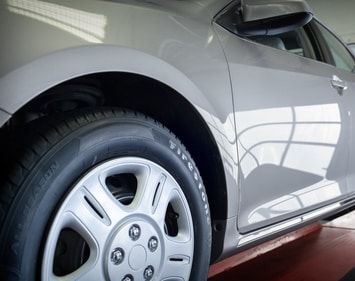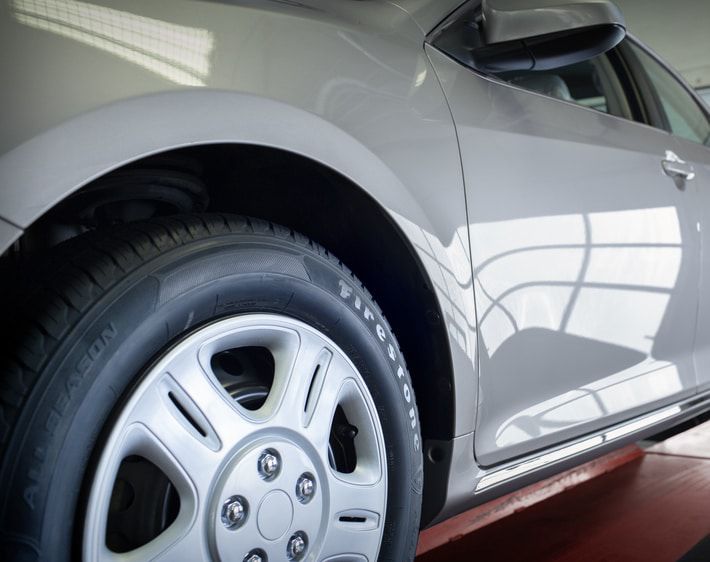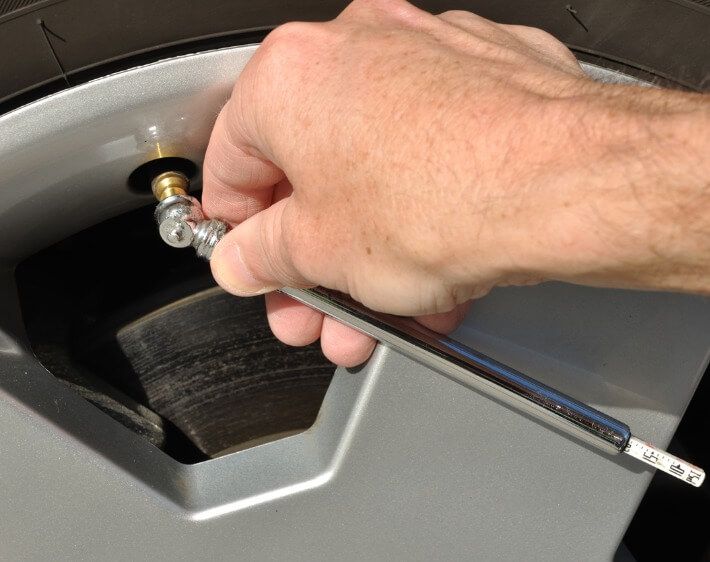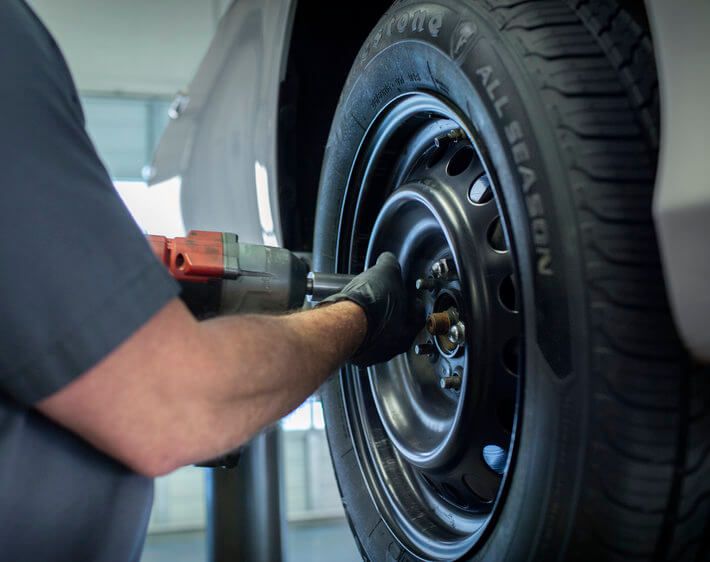
We’re here to answer your tire questions. Take a quick look at the comparison table below and read on to learn when all-season tires, summer tires, or winter tires could be right for your driving style, climate, and vehicle.
Quick Look: All-Season vs. Summer vs. Winter Tires
| All-Season Tires | Summer Tires | Winter Tires | |
|---|---|---|---|
| Traction | Versatile traction for wet, dry, and snow-covered roads | High-performance traction on wet and dry roads, but not on snow or ice | Dependable traction in snowy, icy and wet conditions |
| Tread Features | Grooves and slits designed for solid handling in rain and light snow | Wide grooves to help resist hydroplaning | Zig zag grooves and special slits for reliable braking in snow and slush |
| Benefit | Smooth ride | Maneuverability | Comfortable ride |
| Best For | Places that experience all seasons to mild degrees | Places with long, hot summers | Places that consistently experience temperatures of 40°F or less |
| Top Picks | Firestone AS | Bridgestone Potenza RE-11 | Bridgestone Blizzak or Firestone Winterforce |
All-Season Tires
Summer, spring, or fall—all-season tires are designed to help you brave the road year-round! They're engineered to provide traction on wet, dry, and snow-covered roads. However, if you live in an area that often gets pounded by winter ice, snow, and sleet, you'll probably need more cold weather features than all-season tires provide.
Specially-designed grooves in all-season tires help disperse water to improve grip on wet roads. To better handle light snow, all-season tires have hundreds of tiny, relatively shallow slits within the larger tread blocks. These slits are known as sipes, and they’re meant to increase tire contact with the road surface to improve traction in icy conditions.
All-season tires, like Firestone All Season, offer a quiet, smooth ride along with confident handling in places that experience various types of weather (although not extreme winter weather).
Summer Tires
Summer tires deliver track-quality performance in wet and dry conditions. They’re engineered to supply a solid mix of traction, handling, and low road noise, and they remind you that you don't need a racetrack to drive like a champion.
Most importantly, summer tires are made to withstand the heat of the season, meaning they’ll last longer than non-summer tires would if you drive in a climate where high temperatures are the norm.
On or after rainy days, summer tire treads give drivers more behind-the-wheel control. In dry conditions, summer tires are made to offer superb handling and cornering. Bridgestone Potenza RE-11s, for example, have emerged as a real crowd-pleaser thanks to their precise handling.
A quick note on naming: summer tires fall into the performance tire category which is why they’re sometimes referred to as such. However, performance tires can come in summer, winter, and all-season designs. So, while all summer tires fall into the performance category, not all performance tires are designed for summertime.
Winter Tires
Winter tires help ensure you can drive from one place to another—from home to work, for instance—without slipping and sliding on roads covered with ice, snow, or sleet.
Three things set winter tires apart from other tires: rubber composition, tread depth and pattern, and biting edges.
1. Rubber Composition: A special rubber gives winter tires an advantage in a cold-weather climate. This rubber remains soft and flexible so that when the thermometer drops, your tires are still capable of grip and traction. By contrast, the rubber in non-winter tires tends to stiffen in cold weather, resulting in a decrease in grip.
But the rubber composition that’s so helpful in the cold can cause winter tires to wear out more quickly if driven on during the warmer months. So, it’s best to switch back to all-season or summer tires once the worst of the winter has come and gone. Winter tires are ideal for vehicles where winter temperatures regularly fall to 40°F or below. Put your winter tires in storage when temperatures are consistently above 40°F.
2. Tread Depth and Pattern: The deeper tread depths of winter tires increase traction on snowy roads and reduce the accumulation of snow. Furthermore, the precision-cut tread patterns, or grooves, of winter tires help stop hydroplaning by pushing water through the tread and away from the tire. For instance, Firestone Winterforce tires have a three-dimensional tread pattern that's pinned for studs if you need extra traction.
3. Biting Edges: Deep, zig-zag grooves covering the tread of winter tires serve as “biting edges” that enable better grip on snowy or icy roads. (Watch this video to learn about the zig-zag grooves in Blizzak tires, Bridgestone's leading winter tire.)
Keep in mind that installing only two winter tires on either the front or back axle could be dangerous. Since different types of tires offer different levels of traction, mounting only two winter tires could cause an imbalance between your car's front and back traction—making you more likely to lose control. If winter tires are installed on the rear axle of a vehicle, it’s strongly recommended that they also be installed on the front axle.
It's also important for all of the winter tires on a vehicle to have the same speed rating. Speed ratings are an indicator of tires' steering and stopping capabilities at different speeds. If you have tires with different speed ratings, they'll react to acceleration differently. Add a thick layer of snow and ice to that situation, and you've got yourself a serious safety hazard!
If you're considering new tires for your vehicle, visit your local Firestone Complete Auto Care and talk to an expert technician about the type of tire that's best for your car. We also encourage you to double check your car's manual for specific instructions before you make your final choice between all-season, summer, or winter tires.



